This free, step-by-step guide is designed to walk you through the process of making a go bag. With just a little preparation, you can build a go bag that will keep you and your family safe in the event of a disaster.
Would you rather buy a premade go bag? If so, no problem! We’ve got you covered.
While we wrote this guide to help people make their own go bag, read this guide to learn more about buying an emergency kit.
Please note that this post contains affiliate links. If you use these links to buy something we may earn a commission. Thanks.
TL;DR? Here are our recommended items:
 | Food | Buy on Amazon |
 | Food | Buy on Amazon |
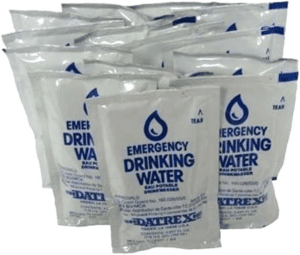 | Water | Buy on Amazon |
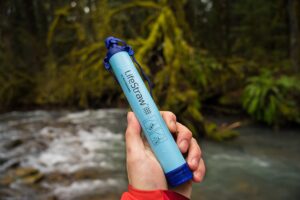 | Water Purification Straw | Buy on Amazon |
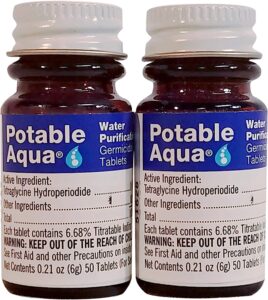 | Water Purification Tablets | Buy on Amazon |
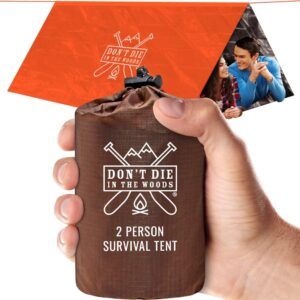 | Tent | Buy on Amazon |
 | Bivy Sack | Buy on Amazon |
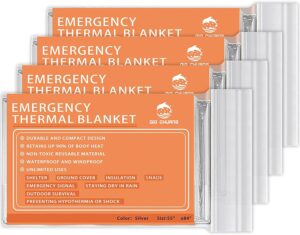 | Blankets | Buy on Amazon |
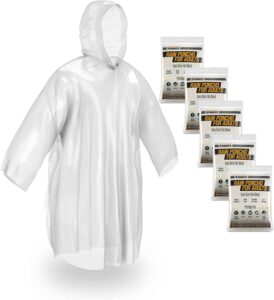 | Ponchos | Buy on Amazon |
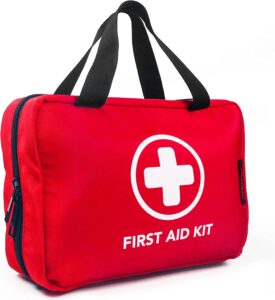 | First Aid Kit | Buy on Amazon |
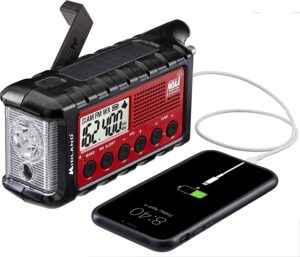 | Emergency Radio | Buy on Amazon |
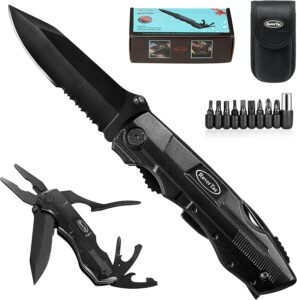 | Pocket Knife Multitool | Buy on Amazon |
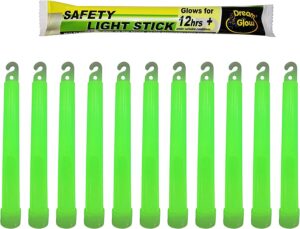 | Glow Light Sticks | Buy on Amazon |
 | Masks | Buy on Amazon |
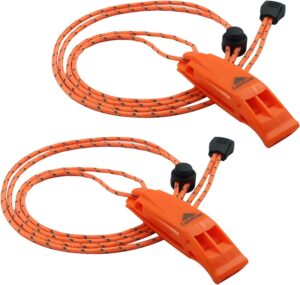 | Whistle | Buy on Amazon |
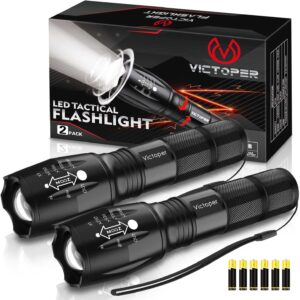 | Flashlight | Buy on Amazon |
 | Tape | Buy on Amazon |
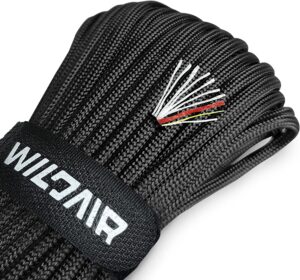 | Rope | Buy on Amazon |
 | Portable Lighting | Buy on Amazon |
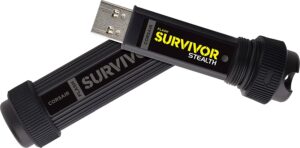 | Flash Drive | Buy on Amazon |
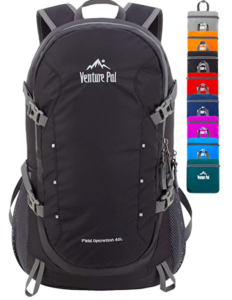 | Backpack | Buy on Amazon |
 | Waterproof Folder | Buy on Amazon |
 | Battery Pack | Buy on Amazon |
Ready to read the guide and put together a go bag? Let’s do this!
Table of Contents
- Food and Water
- Shelter
- First Aid
- Communication
- Survival Tools & Accessories
- Essential Documents
- Bag
- Other Useful Items
Please note that this content is reader supported. If you click on our links, we may earn a commission. Thank you!
Step 1 – Food and Water
Food and water are the most important things to have in your go bag. According to the survival rule of 3, we cannot survive three days without water and three days with food. While not an exact science, it does provide a general guideline for how long a person can go without these essential elements in a survival situation.
When choosing food, the right balance of nutrition, portability, price, and shelf-life has to be considered. Non-perishable food items, such as energy bars, jerky, and nuts, are great options. If you are looking for something more survivalist, we recommend the Datrax 3600 Emergency Food Bar – 3 Day/72 Hour Bar. Each bar has 200 calories and there is enough in the pack for a family of four to ration over the course of three days.
With water, there are a variety of options. One option is to buy packaged water that can fit easily in your go bag. Others opt for a water filtration system, such as a water purification straw, or water purification tablets. We recommend getting all three.
Step 2 – Shelter
While according to the survival rule of 3, we cannot survive three days without water and three days with food, we also cannot survive 3 hours without shelter in extreme conditions. Having shelter is definitely a needed item for your go bag.
Shelter can be in the form of a tent, tarp, or bivy sack, depending on the individual’s preferences. A warm blanket and a sleeping bag are also important items to have in case the weather turns cold. We’ve found that having a tent, thermal blankets, and ponchos to be the right level of coverage and portability.
Step 3 – First Aid
First aid supplies are also an essential part of a go bag. A basic first aid kit should include bandages, Aspirin, cold compress, gloves, hydrocortisone ointment, roller bandages, tweezers, gauze pads, antiseptic wipes, and cloth tape. A small, compact first aid manual is also a good idea in case you need to reference it for treatment instructions.
Step 4 – Communication
Most of us have cell phones. In most situations, we will still be able to communicate and search the internet freely. However, as seen in other disasters, cellular service is not always ensured. So we need to consider what we will do if we aren’t able to use our smart devices.
One prime way to make sure we stay alert is to have an emergency radio. Emergency radios are just what the name implies – radios designed to be used in the event of an emergency. When the unexpected happens, staying informed with pertinent updates helps us stay prepared and ready if and when the need for decisive action is needed.
Step 5 – Survival Tools & Accessories
Survival tools are anything that one needs in order to survive in the case of an emergency or disaster. Being that these are unpredictable, having the right set of tools to cover multiple situations is important.
In addition to tools, having accessories, such as tape or ropes are helpful.
Here is a list of survival tools and accessories we recommend packing:
- Pocket Knife Multitool
- Emergency Glow Light Sticks
- Masks
- Whistle
- Flashlight
- Tape
- Rope
- Portable Lighting
- Battery Pack
Step 6 – Essential Documents
Essential documents include copies of:
- Your driver’s license, or other photo ID
- Social security cards
- Passports
- Medical ID cards, insurance information, or medical duration power of attorney (DPA) cards
- List of important phone numbers
- Copies of credit cards
- Copies of bank statements
For a more exhaustive list of important documents to have, check out FEMA’s list of critical documents to have in the case of an emergency. This checklist will allow you to mark off the items that you have and help you gather the documents that you haven’t packed.
Storing these documents is something that also needs to be considered. Having your files in a waterproof folder will protect them from the elements and keep them safe in your bag. A flash drive is also a good choice for storing files. We highly recommend the Corsair Flash Survivor Stealth 64 GB USB 3.0 Flash Drive as its rugged design along with it being waterproof up to 200 meters, vibration-resistant, and shock resistant make it a solid addition to your go bag.
Step 7 – Bag
Most go bags are backpacks and for good reason. When on the run, it is easy to throw a backpack on your back and go. Backpacks are designed to evenly distribute the weight. Plus, they are small enough to fit in a closet and be accessible for grab and go.
More and more people are opting for ones with wheels. These are good for older couples or those with back problems since putting on a backpack might be difficult. Plus, rolling bags offer more space than traditional backpacks. However, they are not as versatile or portable as a backpack. These should be limited to those where a backpack is inconvenient.
Others opt for a duffle bag. These are good as well and offer more space than a backpack. There are plenty of options to choose from. One word of caution is to choose one that is not too big as this will make transporting it difficult. A medium size one will suffice depending on the size of the family.
Step 8 – Other Useful Items
Now that we have covered the major items, let’s mention a few other items that would be worthwhile to have in your go bag. These include:
- List of emergency contacts and meeting places and a local map
- Credit cards and cash
- Extra set of house keys and car keys
- Paper, pens, and activities for children
Overview
In this guide, we covered a wide range of go bag essentials. If you haven’t already, prepare now. Spending a moment now is a moment saved in the event of an emergency or disaster.
